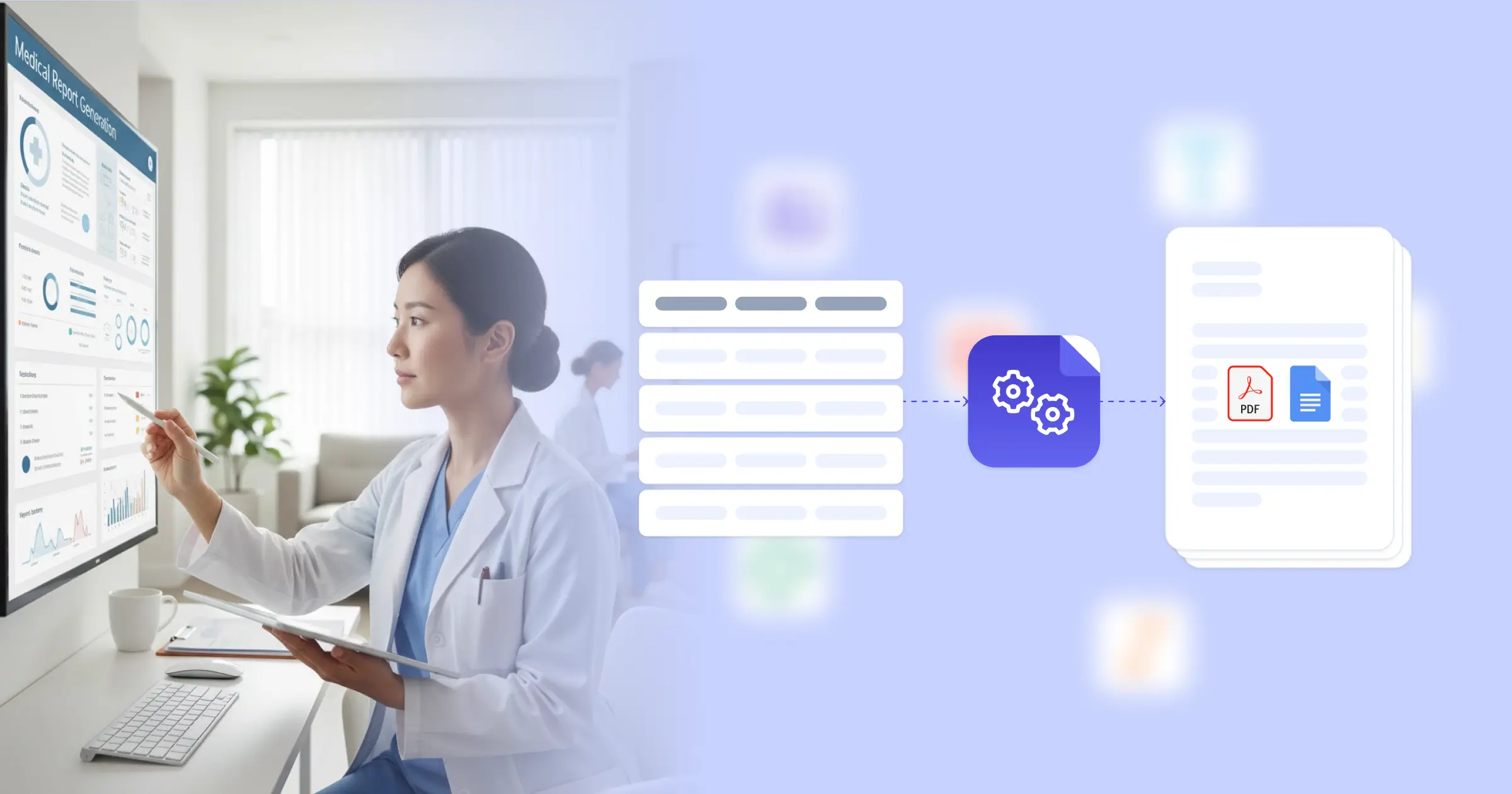
Understanding Medical Report Automation for Healthcare Organizations
Medical report automation addresses the documentation burden that healthcare providers face when creating patient summaries, referral letters, and clinical reports. Physicians and clinical staff spend considerable time extracting information from electronic health records and reformatting it into documents for other providers, insurance companies, or patients themselves. According to McKinsey research on healthcare efficiency, administrative tasks consume substantial clinical time that could be directed toward patient care. But it does not have to be that way. By connecting a Google Docs template with your existing data sources, whether that's your EHR system via APIs, Airtable for tracking patient outcomes, or other clinical databases, this automation pulls patient demographics, clinical findings, treatment details, and follow-up requirements directly into professionally formatted reports, letting your team focus on medical decision-making rather than document formatting.






















